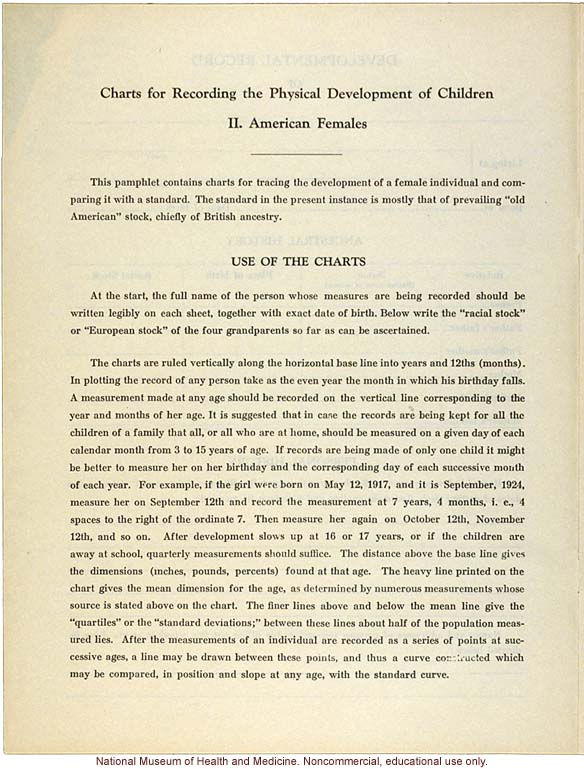Charts for Recording the Physical Development of Children
II. American Females
[centered score]
This pamphlet contains charts for tracing the development of a female individual and comparing it with a standard. The standard in the present instance is mostly that of prevailing "old American" stock, chiefly of British ancestry.
Use of the Charts
At the start, the full name of the person whose measurements are being recorded should be written legibly on each sheet, together with exact date of birth. Below write the "racial stock" or "European stock" of the four grandparents so far as can be ascertained.
The charts are ruled vertically along the horizontal base line into years and 12ths (months). In plotting the record of any person take as the even year the month in which his birthday falls. A measurement made at any age should be recorded on the vertical line corresponding to the year and months of her age. It is suggested that in case the records are being kept for all the children of a family that all, or all who are at home, should be measured on a given day of each calendar month from 3 to 15 years of age. If records are being made of only one child it might be better to measure her on her birthday and the corresponding day of each successive month of each year. For example, if the girl were born on May 12, 1917, and it is September, 1924, measure her on September 12th and record the measurement at 7 years, 4 months, i.e., 4 spaces to the right of the ordinate 7. Then measure her again on October 12th, November 12th, and so on. After development slows up at 16 or 17 years, or if the children are away at school, quarterly measurements should suffice. The distance above the baseline gives the dimensions (inches, pounds, percents) found at that age. The heavy line printed on the chart gives the mean dimension for the age, as determined by numerous measurements whose source is stated above on the chart. The finer lines above and below the mean line give the "quartiles" or the "standard deviations;" between these lines about half of the population measured lies. After the measurements of an individual are recorded as a series of points at successive ages, a line may be drawn between these points, and thus a curve constructed which may be compared, in position and slope at any age, with the standard curve.
[end]


